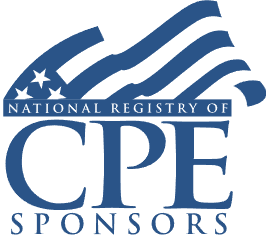CFC Worthless Stock Loss Deduction Rules: GILTI and BEAT Limitations to Deductibility of Insolvent Foreign Stock

Welcome! Strafford is now BARBRI! The expert courses you know from the trusted global leader in legal education.
Course Details
- smart_display Format
On-Demand
- signal_cellular_alt Difficulty Level
Intermediate
- work Practice Area
Corporate Tax
- event Date
Tuesday, December 17, 2019
- schedule Time
1:00 PM E.T.
- timer Program Length
110 minutes
-
BARBRI is a NASBA CPE sponsor and this 110-minute webinar is accredited for 2.0 CPE credits.
-
BARBRI is an IRS-approved continuing education provider offering certified courses for Enrolled Agents (EA) and Tax Return Preparers (RTRP).
This course will provide corporate tax advisers with a practical guide to claiming deductions of worthless stock in the context of controlled foreign corporations (CFCs) after the 2017 tax reform law. After briefly outlining the prior treatment allowing for a full deduction for worthless stock in a CFC, the panelist will detail how the GILTI provisions can reduce the tax benefit a U.S. parent may claim for CFC stock that becomes worthless.
Faculty

Mr. Hallman has over a decade of international tax experience including roles in Big 4, middle-market and industry. His specialties include both inbound and outbound legal entity restructuring, mergers and acquisitions, and treasury management, with a particular emphasis on Subchapters C and K in a cross-border context and financial reporting for income taxes.
Description
Among the significant and unanticipated changes brought about by the 2017 tax reform law is the treatment of worthless stock in a CFC. The new GILTI and BEAT provisions will in many cases serve to limit the deduction available to U.S. owners of CFCs when the corporation stock is deemed worthless.
Section 165(g)(3) provides an exception to the general capital loss rules governing worthless stock by allowing a U.S. corporation to claim an ordinary loss deduction when securities of defined affiliated corporations become worthless during the tax year. Prior treatment allowed corporations to use entity selection strategies to claim worthless stock deductions as a planning tool for a corporate owner of an affiliated CFC.
However, the Section 951A GILTI regime requires a basis adjustment through its "tested income/tested loss" calculations. When a U.S. corporate owner disposes of stock in an affiliated CFC, the domestic corporation must reduce its basis in the CFC stock, potentially creating a gain on sale or exchange, and reducing the tax benefit of the worthless stock deduction.
Also impacting the deductibility of worthless CFC stock is the BEAT regime of Section 59A. The base erosion provisions may qualify a liquidation event of an affiliated CFC to satisfy intercompany debt owed by the CFC as a base erosion payment, which would be subject to a BEAT liability. Tax advisers must be able to evaluate the overall tax treatment of excess foreign tax credits to determine whether to plan into GILTI or Subpart F.
Listen as Robert Hallman, Director at CLA, reviews the changes to the treatment of worthless stock in an affiliated CFC and provides a practical guide to maximizing tax benefits of liquidation in insolvency scenarios.
Outline
- Existing Subpart F framework
- Expansion of Subpart F in the new tax reform law
- Expanded definition of a CFC and U.S. shareholder
- Additional income included in the calculation base
- Downward attribution rules
- Section 951A GILTI rules
- Treatment of excess foreign tax credits GILTI vs. Subpart F income
- Planning opportunities to elect into Subpart F to utilize carryforward CFCs
Benefits
The panelist will discuss these and other relevant topics:
- How the 2017 tax law's expansion of the definitions of CFCs and U.S. shareholders will create new tax and reporting obligations for U.S. taxpayers previously exempt from filing duties
- Constructive ownership tests in CFCs after the new downward attribution rules
- How the Subpart F changes run counter to the tax law's general aim to convert to more territorial taxation of U.S. taxpayers as opposed to global-based
- Treatment of earnings invested in U.S. property
NASBA Details
Learning Objectives
After completing this course, you will be able to:
- Determine how the definition of U.S. shareholders subject to tax on previously deferred foreign-source income has changed under the new law
- Distinguish the tax provisions under Subpart F from the GILTI provisions
- Recognize the treatment of foreign tax credits beginning in the 2018 tax year
- Ascertain whether income is Subpart F income and the tax consequences if income is classified as Subpart F income
- Identify scenarios in which inclusion into Subpart F would provide a better overall tax result through the usage of excess foreign tax credits than GILTI inclusion even with the 50% deduction
- Field of Study: Taxes
- Level of Knowledge: Intermediate
- Advance Preparation: None
- Teaching Method: Seminar/Lecture
- Delivery Method: Group-Internet (via computer)
- Attendance Monitoring Method: Attendance is monitored electronically via a participant's PIN and through a series of attendance verification prompts displayed throughout the program
- Prerequisite: Three years+ business or professional experience at mid-level within a tax or accounting organization, preparing complex tax forms and schedules, such as Form 1116. Specific knowledge and understanding of international taxation, foreign source income, deferred foreign source income, controlled foreign corporations, specified foreign corporations, repatriation of deferred foreign earnings, and treatment of foreign-sourced income received by U.S. taxpayers, familiarity with cash and non-cash retained earnings and profits and global intangible low-tax income (GILTI).

Strafford Publications, Inc. is registered with the National Association of State Boards of Accountancy (NASBA) as a sponsor of continuing professional education on the National Registry of CPE Sponsors. State boards of Accountancy have final authority on the acceptance of individual courses for CPE Credits. Complaints regarding registered sponsons may be submitted to NASBA through its website: www.nasbaregistry.org.

Strafford is an IRS-approved continuing education provider offering certified courses for Enrolled Agents (EA) and Tax Return Preparers (RTRP).
Unlimited access to premium CLE courses:
- Annual access
- Available live and on-demand
- Best for attorneys and legal professionals
Unlimited access to premium CPE courses.:
- Annual access
- Available live and on-demand
- Best for CPAs and tax professionals
Unlimited access to premium CLE, CPE, Professional Skills and Practice-Ready courses.:
- Annual access
- Available live and on-demand
- Best for legal, accounting, and tax professionals
Unlimited access to Professional Skills and Practice-Ready courses:
- Annual access
- Available on-demand
- Best for new attorneys
